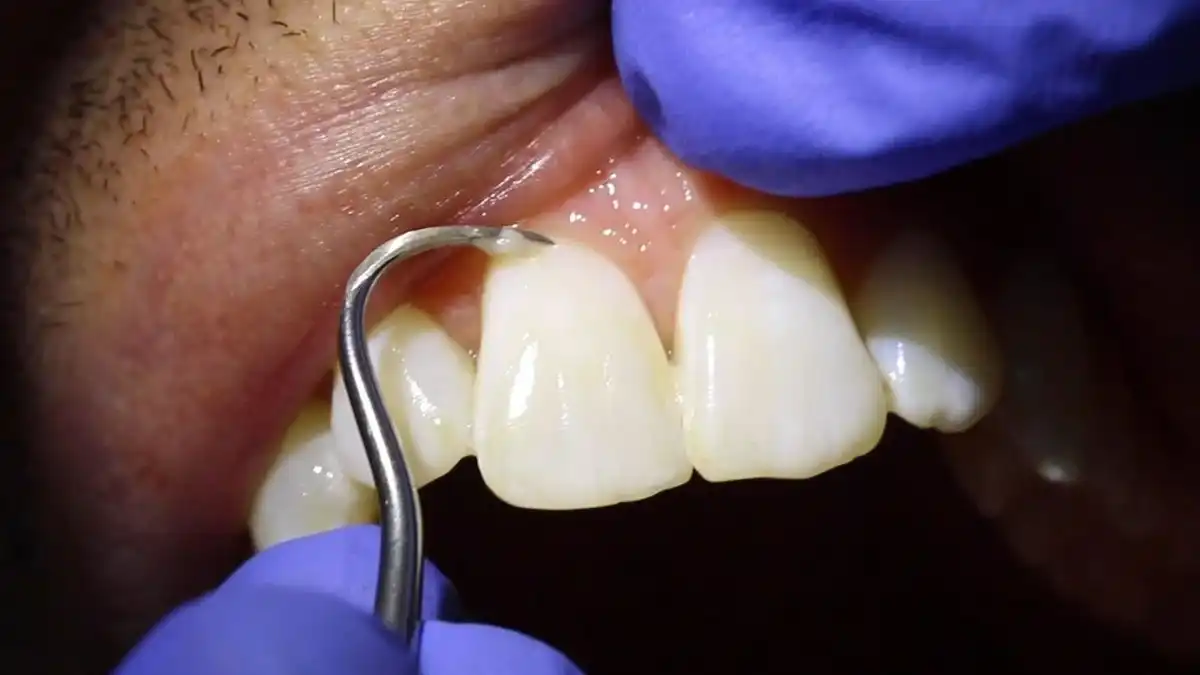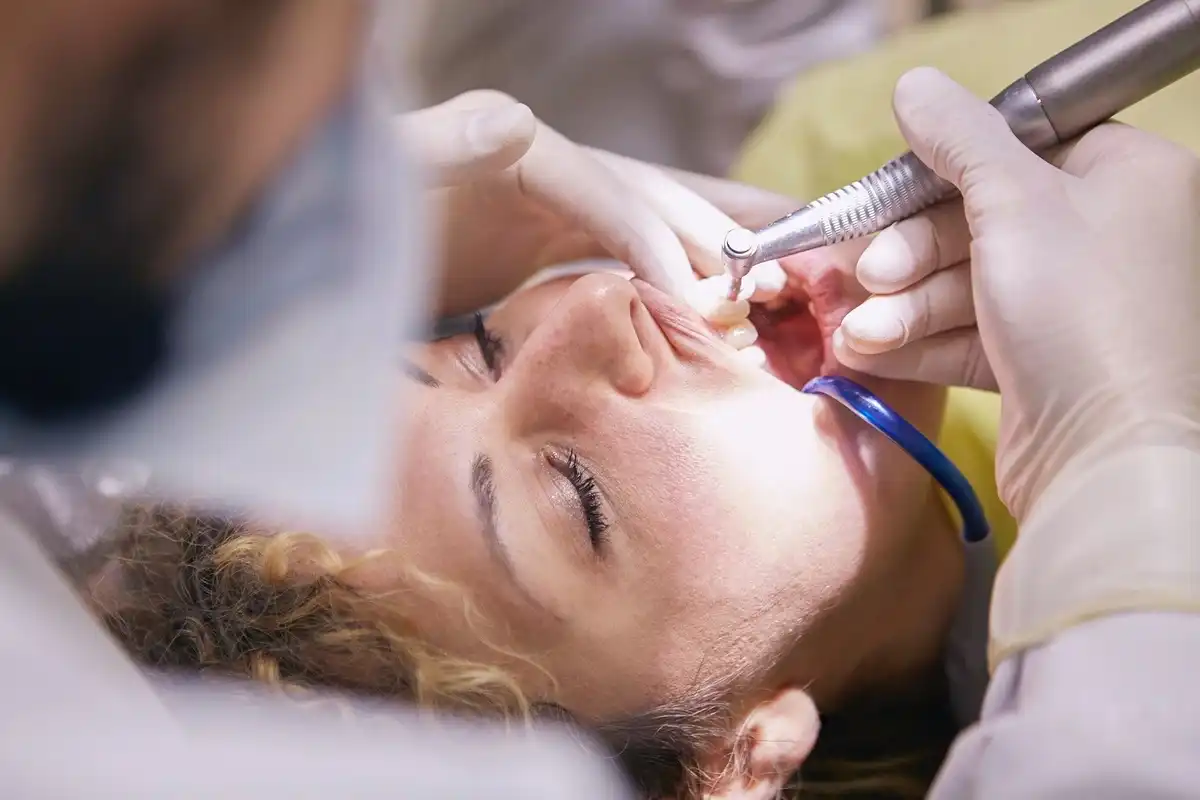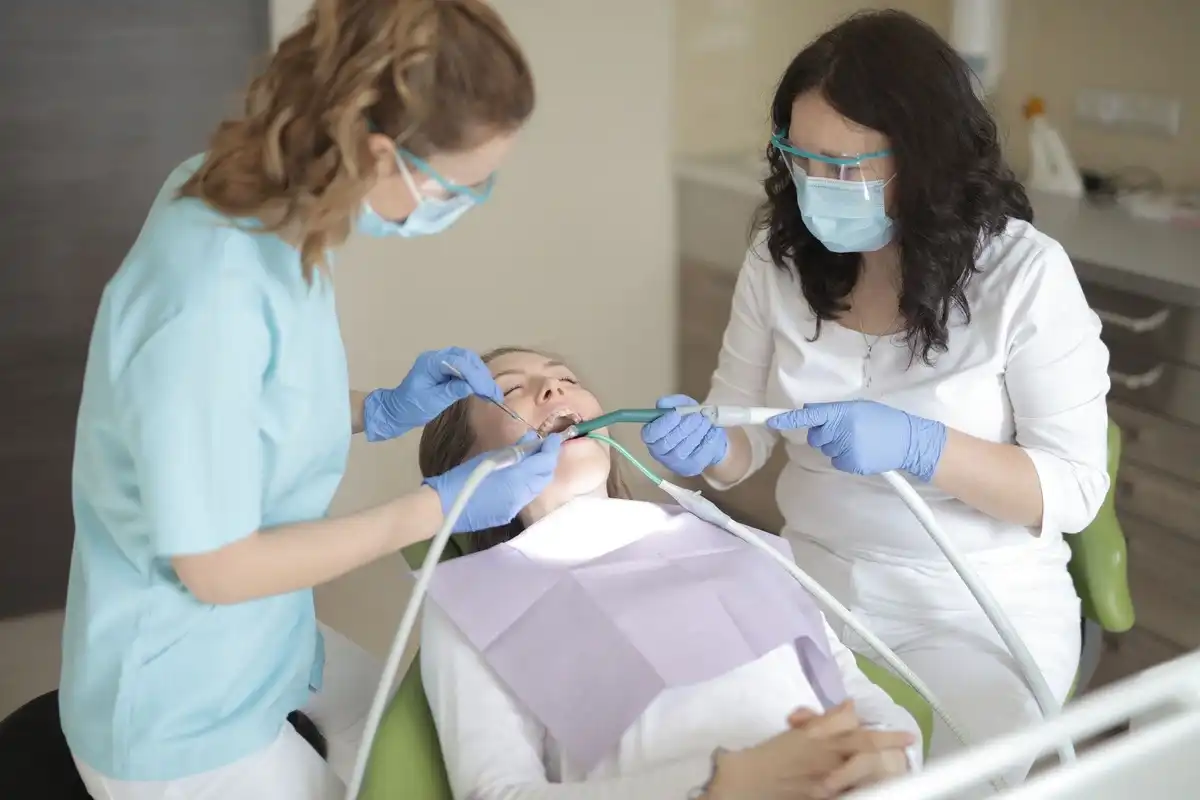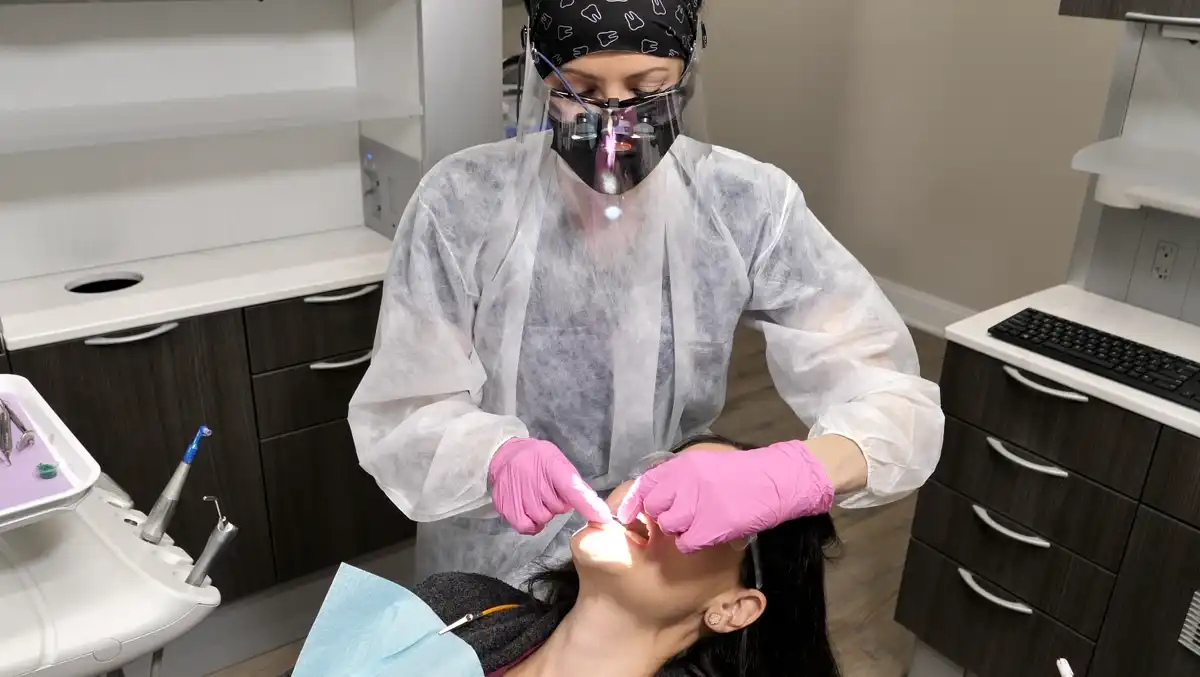What Do Dental Hygienist Do

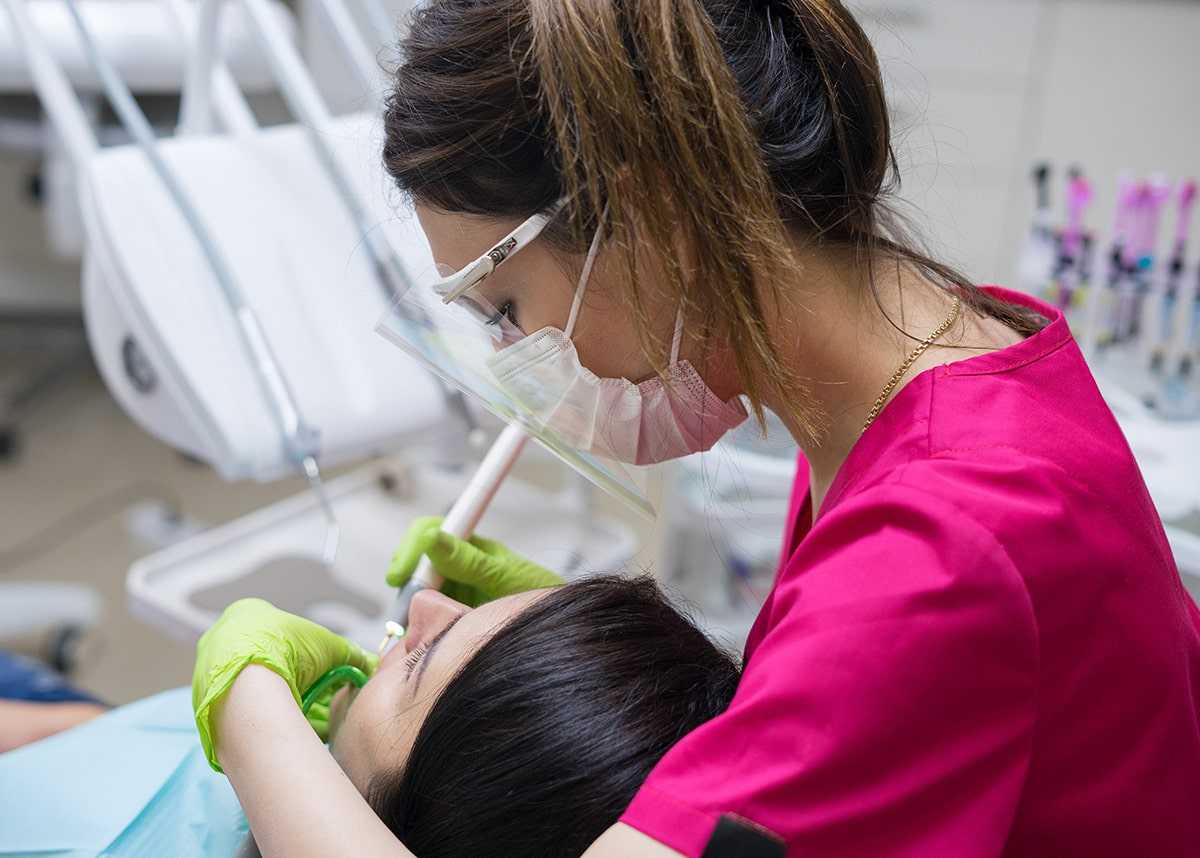
If you’re thinking about becoming a dental hygienist or want to know more about the difference between an RDH and a dental assistant, a great place to start is with the job description. Dental hygienists provide direct patient care under the “supervision” of a dentist. In other words, they see patients of the dentist without working directly alongside a dentist. Their focus is on preventative therapies and helping patients keep their smiles healthy through smart nutritional and oral hygiene habits. But beyond “just cleaning teeth,” the job description of a dental hygienist consists of a lot of other responsibilities!
What is an RDH?
Registered dental hygienists—otherwise known as an “RDH”—are dental professionals with a 2-year or 4-year degree in dental hygiene. Like nurses, they complete a two year program in their field after completing necessary prerequisite classes like microbiology or anatomy and physiology. Additional undergraduate coursework can lead to a bachelor’s degree, depending on your educational institution. There are over 300 accredited dental hygiene programs in the United States according to the American Dental Association.
An RDH is the dental health professional you see when you plan your checkup and cleaning at the dentist’s office. They clean your teeth, educate you about your oral health, and probably take X-rays while you’re there. Your dental hygienist is focused on helping you have healthy teeth for a lifetime. Dental hygienists work with dentists to help you achieve and maintain optimal oral health.
Dental hygienists also have to take written and clinical national board exams before becoming licensed to practice in their state.
Dental assistants are completely different! You can learn more about dental assistants here!
What Does A Dental Hygienist Really Do?
The majority of what an RDH does is related to direct patient care. But there’s a lot that goes on behind the scenes, between patients, or before the office opens up that day. Job responsibilities for an RDH can vary from office to office depending on the management as well as which state you’re located in.
As with most careers, dental employees will usually have a written job description that ensures things run smoothly throughout the office and establishes a consistent level of care from patient to patient. A typical job description of a dental hygienist will consist of things like:
1. Cleaning Teeth (And Other Direct Patient Care Services)
You guessed it—you’ll be cleaning teeth! Depending on the patient’s age, gum health, and how much buildup is on their teeth, you’ll use manual hand instrumentation or an electronic ultrasonic machine to remove tartar and stain. After cleaning their teeth, you’ll go back with a polishing cup to remove any superficial stains. During cleanings, dental hygienists also check the gums for signs of gum disease to help diagnose and prevent it.
Other preventative services that happen during dental cleanings might also include:
- Administering fluoride treatments
- Placing dental sealants
- Taking dental impressions
2. Taking And Interpreting Dental X-Rays
Most dental hygienists take their own X-rays when they have a patient. Sometimes an assistant will help if they’re available. You’ll need to have plenty of practice getting the angulations right, so that you can see between and around teeth rather than overlapping them (making the image impossible to read.) Once you have the X-rays, you’ll also go through them to identify areas of concern to bring them to the attention of your supervising dentist.
3. Assessing Oral Health Needs
Your hygienist will usually pre-screen your mouth for dental issues by measuring bone levels and gum attachment to see if a patient has active periodontal disease. You’ll need this information before you can plan appropriately for what type of cleaning is needed (preventative cleaning/prophylaxis or another type of cleaning such as a debridement or deep cleaning). This assessment helps in planning a personalized dental treatment plan for the patient. Additionally, you’ll perform an oral cancer screening to identify any abnormal or precancerous areas inside of the patient’s mouth at the time of their appointment.
4. Educating Patients
Dental hygienists spend a ton—and I mean a ton—of time educating their patients. Some of the things you’ll teach patients about include oral cancer, nutritional counseling, oral symptoms of systemic health conditions, how to care for specific types of dental restorations or prosthetics, brushing and flossing (of course,) and risk factors associated with certain medical backgrounds or lifestyles. For instance, if a patient has a dry mouth from a medication that they’re taking, you would need to discuss the effects of xerostomia and how to reduce their heightened risk of tooth decay.
5. Administering Local Anesthesia
Most states allow dental hygienists to administer local anesthetic or “numbing” medication. But even the few states that don’t allow it still require RDH students to train in this area of patient care. Local anesthetic numbs specific teeth or parts of your mouth, depending on where the injection is administered. Sometimes the job description of the dental hygienist will even include numbing the dentist’s patients for them if they’re between patients (this helps improve patient workflow for all of the practitioners in the office.) As you might guess, administering local anesthetic also requires familiarity with pharmaceutical drugs and knowing how to rule out any contraindications, such as giving certain anesthetics to patients with specific types of medical backgrounds.
6. Recording Medical And Dental Histories
I can’t stress this one enough. One of the most important job descriptions of a dental hygienist is reviewing and evaluating a patient’s medical and dental history. This includes going over any medications that they’re taking, whether prescription or over the counter, discussing any recent hospitalizations or surgeries they’ve had, and making sure you have information related to any medical diagnoses that are applicable. You’ll also have to chart existing dental work in the patient’s records. Dental hygienists will want to update their patient’s health history at every visit in order to avoid potential interactions, complications, or medical emergencies.
7. Documenting Treatment
Record keeping is an extremely important clinical and legal responsibility of the dental hygienist. Maintaining stringent records and writing (or typing) out what services were rendered that day is vital to the quality of care for the patient as well as maintaining your license. On that note, if a patient ever denies treatment, make sure it’s documented and signed by the patient. If something isn’t documented properly, it could potentially expose you and the practice to a lawsuit. But most importantly, good documentation ensures you’re able to always keep up with the care the patient receives or needs while they’re under your care.
8. Collaborating With The Dentist
Sometimes hygienists need to have short micro-meetings with the dentist between patients to help strategize care plans for specific patients.Especially if you notice something out of the norm. Depending on how your patient schedules are planned, this could be popping into the office when the dentist is doing administrative work, leaving a note in their office, or just having a sticky note next to the patient tray for the dentist to look at when they come by for an exam.
Even though dental hygienists are not legally allowed to diagnose disease, they still play a role in identifying and pre-screening “abnormal” or “irregular” oral health issues. In other words, you may know for a fact that it’s a cavity or abscess, but you’ll need to have the dentist check off on it to make the formal diagnosis. So be sure to communicate whatever you see during the cleaning so that the dentist can confirm it during their exam.
9. Odd Jobs Around the Office
Aside from seeing patients, some dental hygienists will also be responsible for ordering supplies and maintaining inventory records in their office. This might include making sure gloves, masks, prophy paste, and other materials are stocked at all times.
Additionally, you’ll need to help with sterilizing instruments between patients. Especially if you have downtime and your fellow team members have instruments that need to be processed. Nobody likes an RDH that doesn’t help out with sterilization!
If there’s additional downtime between patients, you’ll probably also need to help out with calling recall patients to schedule their checkups, mail out postcard reminders, answer the phones, or perform other administrative tasks.
How To Become An RDH
To become a dental hygienist, you’ll first need to have all of your dental hygienist requirements and prerequisite coursework completed and then apply to an accredited dental hygiene program. Depending on your preferences, you can either go for an associate’s or a bachelor’s degree (there’s usually not a difference in your pay, nor does it affect your scope of responsibilities.) Since getting into dental hygiene school can be competitive, it doesn’t hurt to apply to at least 2-3 of them!
Many dental hygienists choose to pursue additional training, including earning advanced degrees and taking continuing education courses to stay updated on the latest practices and discoveries in dental hygiene.
Once you’re about to complete dental hygiene programs, you’ll also need to take and pass your written and clinical national board exams. At that point, you can apply for a license in the state where you plan to live and practice.
Dental Hygienists' Responsibilities
Becoming a dental hygienist is an extremely fulfilling career. Your job description and responsibilities allow you to truly make a difference in the health, quality of life, and self-confidence of other people. If you’re considering becoming an RDH, be sure to familiarize yourself with these common job descriptions ahead of time. This will help you transition into school and your career as you look for your first hygiene job. Additional training can lead to opportunities in education, other clinical settings, and public health programs, including school health programs. Yes, you’ll be “cleaning teeth” on a full time basis, but your responsibilities will also consist of a host of other administrative and office roles that could be shared among your team members or entirely your responsibility altogether.

Make your inbox smile!
Subscribe
